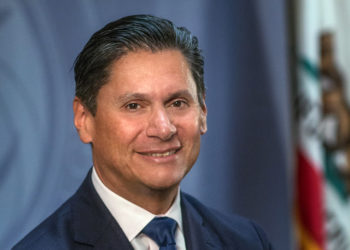
As we head toward the conclusion of another academic year, it’s important to take... Read More about Listening Tour Offers Opportunity to Discuss Vision for Success

As the California Community Colleges work to advance the goals of our Vision for Success in 2019, Gov. Gavin Newsom has come down squarely on the side of students – from toddlers to working adults — in his budget proposal for the upcoming fiscal year.
The Governor has demonstrated a strong commitment to the California Community Colleges. The budget furthers a key priority ours: addressing affordability to give more Californians the opportunity to attend the community colleges to gain the skills and credentials needed to succeed in today’s economy.
The proposed expansion of the California College Promise—which builds on the framework created under Assembly Bill 19 of 2017—complements California’s historic commitment to free tuition for low-income students by supporting colleges in providing free tuition to full-time, first-time students for the amount of time needed to complete a college credential.
I am especially heartened by the Governor’s proposals to significantly expand aid for the students who rely on the community colleges the most, including student parents and adults returning to school—proposals that recognize that too many community college students lack the resources needed to support the non-tuition costs of college.
This will serve a building block for further discussion and proposed legislation to establish the California Community College Student Financial Aid Program, which would provide greater need-based grant support for community college students. The program details are contained in SB 219 by Sen. Connie M. Leyva, chair of the Senate Education Committee, and several co-authors.
In most regions of California, the true cost of attending community college for low-income students is higher than for students at a nearby California State University or University of California campus. Very few community college students qualify for financial aid to cover living expenses, transportation, or textbooks. Sen. Leyva’s bill seeks to address these inequities, and you can help this effort by clicking here.
Just 5 percent of our 2.1 million California community college students receives a Cal Grant, compared to nearly 40 percent of undergraduate students at the University of California and approximately 36 percent of students at the California State University system.
The Governor’s Budget continues implementation of the Student Centered Funding Formula, a key component of the state’s strategy to achieve the Vision for Success. And his plan would implement many of the policies the Governor described on the campaign, including allocating nearly $2 billion for early childhood education programs, expanding financial subsidies for health care coverage.
Our governor spoke often during his campaign about the essential “cradle-to-career” pipeline that California must establish. Early learning, K-12 education and higher education all comprise one, single ecosystem of education, with each area dependent on one another for the success of California. Policy changes that solve the big challenges facing education and the state at large help to advance Californians and sustain the state’s economy as the fifth largest in the world.
California faces a number of major challenges, including a looming workforce shortage because most students are not adequately prepared for success entering college. Now is the time for progress in all facets of California’s education system to ensure that every Californian has access to equitable education opportunities supporting success through school and into the workforce.
Community colleges play important roles throughout the “cradle-to-career” continuum. We train early childhood development providers, educate future K-12 teachers, educate K-12 students in concurrent enrollment and serve as the state’s largest workforce education provider.
Enhanced education opportunities for Californians of all ages are the key to our state’s success.


As we head toward the conclusion of another academic year, it’s important to take... Read More about Listening Tour Offers Opportunity to Discuss Vision for Success

Contact your legislators! That’s the message the California Community Colleges... Read More about More Financial Aid for California Community College Students Must Not Wait and You Can Help!

In March “I Can Afford College” launched two in a series of six digital-first... Read More about “I Can Afford College” Campaign’s New Latinx Youth YouTube Series